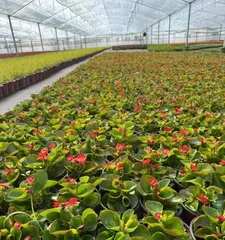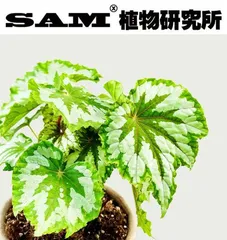Begonia semperflorens, also known as perennial begonia, is a beautiful ornamental plant, highly regarded for its characteristic of blooming continuously throughout the four seasons. With its elegant flowers, rich colors, and fragrance, it has become a favorite among many gardening enthusiasts. This article will introduce the planting and care techniques for perennial begonia, helping readers understand how to cultivate a healthy and beautiful Begonia semperflorens.

Choosing the Right Variety
Perpetual begonias come in multiple varieties, each with slight differences in flower color and blooming period. Selecting the appropriate variety can meet personal preferences and cultivation environment needs.
Soil Requirements
Begonias prefer to grow in loose, fertile, and well-draining soil. Before planting, the soil should be fully amended to ensure the roots can grow well.

Sunlight and Temperature
Perpetual begonias require sufficient sunlight for healthy growth. At the same time, they have certain temperature requirements and should be protected from scorching sun and extremely cold climates.
Suitable Planting Time
Begonias are suitable for planting in spring or autumn. Spring planting allows for the use of the growing season, while autumn planting reduces the impact of hot weather on seedlings.
Fertilizer Application
During the growing period, begonias need a supplementary supply of fertilizer. You can choose organic fertilizer or compound fertilizer and apply it once a month to ensure the plant has sufficient nutrients.

Watering Techniques
Begonias have high water requirements but should not be overwatered. The soil should be kept moist but not waterlogged to avoid root rot.
Pruning and Thinning Flowers
In spring and summer, appropriate pruning and flower thinning are necessary to promote new shoot growth and improve flower quality.
Pest Control
Common pests for begonias include aphids and spider mites. Timely control measures can maintain the health of the plant.
Disease Control
Begonias are susceptible to diseases such as black spot and powdery mildew. Regularly spraying pesticides can control the occurrence of diseases.
Container Gardening Tips
Perpetual begonias are also suitable for container planting, creating beautiful landscape effects in courtyards, on balconies, and other places.
Blooming Period Management
The blooming period of begonias is long, requiring timely pruning and management to extend the blooming period and improve flower quality.
Wind Protection Measures
Because the flowers of begonias are large, they are easily damaged by wind. You can set up a windbreak net or build a simple support to protect the plant.
How to Propagate
Begonias can be propagated by cuttings, grafting, and division. Choosing a suitable method can quickly expand the planting scale.
Winter Protection
The cold winter is a time when begonias are easily damaged. Protective measures such as covering with plastic film or moving into a greenhouse are necessary.
With proper planting and care techniques, we can enjoy the beauty of begonias in all four seasons. Choosing the right variety, providing a good growing environment, applying fertilizer and water reasonably, and preventing and controlling pests and diseases are all key to successfully growing begonias. It is hoped that the introduction in this article can help gardening enthusiasts cultivate a sea of begonias at home.